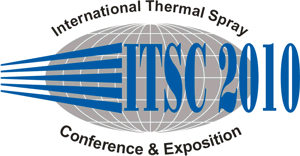| Abstract: |
Many alloy metals undergo significant oxidation when they are deposited by atmospheric plasma spray (APS), though oxidation is not desirable in most applications. It is clear that addition of Si, B and C to Ni-Cr alloy decreased oxide content in the alloy significantly. The mechanism of protecting Ni-Cr alloy from oxidation is preferential oxidation of the added Si, B and C, and simultaneous vaporization of the formed oxides. Fundamental knowledge of the effects of the individual element of Si, B and C on oxidation in thermal spray process is important for the further development of alloy coatings with oxidation suppressed.
In this study, effects of the individual element of Si, B and C on oxidation of iron alloy was carried out by spraying Fe-C, Fe-Si and Fe-B binary powders with APS. To better understand the complex oxidation process in APS, the oxidations of the in-flight particles as well as the sprayed coatings were investigated. The results show that Si, B and C played different roles in suppressing oxidation of iron. In the process of particle flight, Si, B and C effectively decreased the oxidation and in the process after particle impacting the substrate, Si and B still limited the oxidation, however, C showed reversely.
|
|
